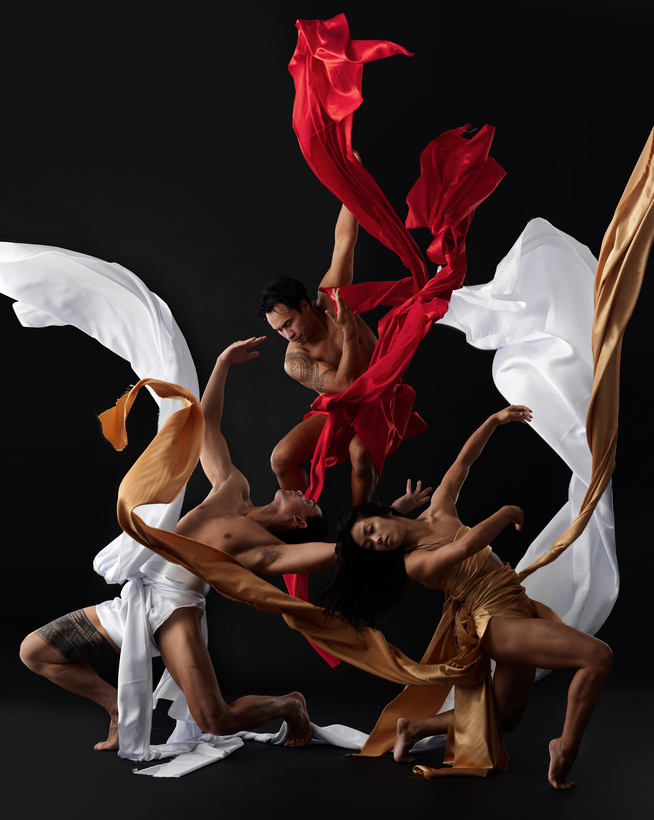When the New Zealand choreographer Neil Ieremia christened his troupe Black Grace, in 1995, he wasn’t thinking of its indigenous, Pacific Island roots, or of the various national sports teams with “black” in their names and vigor in their steps. He had in mind the local slang, in which “black” means brave to the point of audacious. For Ieremia, you couldn’t apply “grace” to a bunch of short, stocky men like himself, whose legs were happiest when bent, and not preface it with a headshake. The word seemed purely aspirational.
Twenty-seven years later—and by the end of any Black Grace show—it has become a statement of fact. The company’s dozen or so dancers, both men and women now, not only spring into the air as easily as cats, and land as softly, but they also possess a spiritual kind of grace. Humble and guileless except when making fun of themselves, they succumb to spells of indigenous ritual that descend without ceremony and just as quietly diffuse. For an American comparison, envision the Paul Taylor of Esplanade: dancers running, jumping, falling, and crawling, attuned to magisterial Bach. (Ieremia also has a penchant for the Baroque, with its dips from rhythmic pluckiness into wells of deep feeling.)

Black Grace concerts—this week in the Berkshires and Manhattan; in September, back in New Zealand—tend to start simply and forcefully. Appearing as a phalanx, the dancers scythe their limbs in tight, mesmerizing patterns, often while chanting in Samoan (the native tongue of Ieremia’s parents, who immigrated to New Zealand in the 1960s, before he was born). As the show progresses, the patterns loosen and scatter across the stage, and the dances take on real-life themes particular to New Zealand.
The prompts may be as vast as the rhythms of a nation surrounded by sea, or as gritty and graphic as the domestic violence that plagues the “very tough neighborhoods” where the choreographer and many of his dancers grew up. “It wasn’t too uncommon for friends to go missing from school—or there’d be the broken arm,” Ieremia explained in a recent Zoom call from company headquarters, in Auckland. He doesn’t do straightforward story, though. Rather, the dances slide between the real and the surreal, beauty and struggle, and, in the latest premiere, memory and dreams.
The impetus for this year’s premiere and headliner is the aging of Ieremia’s parents. His mother is in her late 70s. His father is 85 and not always all there. The son is witness to what remains. At a performance last year, Ieremia recalls, his parents were seated in their customary place in the front row when “my dad got up and tried to take off his clothes.” He wanted to expose his tattoo, a traditional Samoan design that runs from below the knee to the ribs, and to join the dance, as would be “the respectful thing to do” in his community. In these moments, “my dad goes to another place, where he’s completely within his tradition.”
Ieremia has titled the premiere O le Olaga, a phrase Samoans use when misfortune hits. It means “That’s life,” but without the American jocularity or bitterness. “There’s an underlying smile in there,” Ieremia explains. “Under the connotations of sadness, of loss, there’s always the sense of hopefulness.” It’s like when he stays overnight with his parents, devout members of the Samoan Church, and is awoken by them singing their prayers—“These broken voices coming in through the morning and into the other rooms.” —Apollinaire Scherr
Black Grace performs at Jacob’s Pillow Dance Festival through July 31, at the Joyce Theater from August 2 through August 7, and around New Zealand on September 4, 6, and 10
Apollinaire Scherr is the New York dance correspondent for the Financial Times


 Discover
Discover